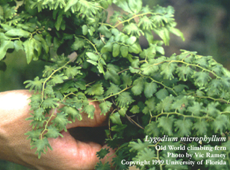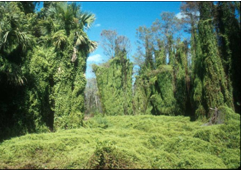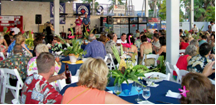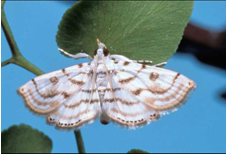
Vol. 4, No. 1, January 2008 |
 Printer-Friendly PDF Version Printer-Friendly PDF Version |
Melbourne Zoo to Offer Technical Large Animal
Emergency Rescue With Haz-Mat Training
|
According to Deb Anderson, the Melbourne Zoo will offer a four-day hands-on Technical Large Animal Emergency Rescue (TLAER) course plus a day of hazardous materials training from May 5th- 8th. The course runs from all day each day at the zoo, 8225 N. Wickham Rd., Melbourne, FL 32940. For additional information, contact Deb at (321) 254-9453 x 250 danderson@brevardzoo.org. (“On the last rescue day,?Anderson says, “there is a night drill so that day can run from 7:30 until past 11:00 PM. It's intense!? “This is hands on certificate training with Tomas and Rebecca Gimenez,?says Anderson. “The |
offers a unique opportunity to practice with rescue trained horses and a variety of
equipment. The Gimenez not only review accepted procedures but also give
participants an opportunity to learn new skills. Their web site at www.TLAER.org
offers further information about their teaching methods and their qualifications.?br>
A one-day class has been added to the end of the regular TLAER course to teach the
decontamination of animals after exposure to hazardous materials. The cost of the
course has not been determined.
[top]
Prospective TLAER Course OutlineAs this Newsletter “went to press?John Haven, Director of the UF College of Veterinary Medicine, Gainesville, said there were still a couple seats available for the TLAER Course scheduled for the college February 4-7. To inquire about those rare vacancies, check with Haven at (352) 392-4700 x 3154 havenj@vetmed.ufl.edu. Below is the tentative course outline (times are approximate):
| |||
Notes From the December 2007
SART Advisory Board Meeting
The December 5, 2007 SART Advisory Board Meeting was called to order at 10:04, in the Florida Farm Bureau Conference Room, Gainesville, Florida. Here are a few of the
items that were discussed:
| 1. | The possibility of funding developing for positions in Food Safety and as statewide SART Coordinator. |
| 2. | As there is no 2008 Florida SART Conference, committees are being formed to prepare for a 2009 Conference. Note that the conference must be at a “green?hotel/resort complex. Volunteers are requested for such Conference matters as site selection, speakers, food and beverage, exhibit area, parking, etc. If interested, please contact Joe Kight (kightj@doacs.state.fl.us), Tim Manning (tim.manning@fl.usda.gov) or Joan Dusky (jadu@ufl.edu). Laura Bevan (lbevan@hsus.org) agreed to chair the Agenda Committee. |
| 3. | John Haven (havenj@vetmed.ufl.edu) reported on the growth of the Florida Veterinary Reserve Corps and the disaster training courses that the College of Veterinary Medicine has either sponsored or supported including HazMat Training. |
| 4. | The March Advisory Board meeting will be held at 10 AM Wednesday March 5th at the 41-acre Marion County 4-H Farm, 2232 NE Jacksonville Rd., Ocala, FL 34470 (352) 671-8400. The meeting will begin immediately after a 48- hour live training event held as a "planned, response to a local disaster." The event will test equipment, coordination and procedures across several of the SART disaster response partners. |
| 5. | A set of pre-approved press releases needs to be developed to facilitate communication by emergency responders during and immediately after an emergency situation. |
| 6. | The initial meetings for the formation of NASAAEP (National Alliance of State Animal and Agricultural Emergency Programs) were discussed. These meetings will take place January 22-23 at the Gaylord Hotel in Orlando in conjunction with the 2008 North American Veterinary Conference. |
[top]
News From the Southwest Chapter, Florida Red Cross
|
Cindy Desmond, Director of Community Education for the Southwest Florida Chapter, American Red Cross in Sarasota reminds us that the Red Cross is always in need of trained volunteers. It seems that almost every day families and communities are experiencing the types of difficulties the Red Cross is designed ?and chartered ?to alleviate somewhere in the U.S. According to Desmond, studying the following information is step one to becoming a volunteer. After viewing the online information, one registers |
Operations, Mass Care, Client Assistance, Logistics ?as one puts the training and
education to use in training scenarios and in actual situations as needed. “We can
certainly use more shelter volunteers,?she says, “and Shelter Operations is only a
three-hour additional course.?br>
|
The chapter has learning materials on line at www.redcross.org/general/0,1082, 0_153_,00.html#orientation- Orientation of the American Red Cross including The American Red Cross Mission and the International Red Cross - Fundamental Principles. A study of this information gives an excellent basic understanding of the Red Cross and its goals. There is also a fine Red Cross training module titled Introduction to Disaster Services at www.southwestflorida.redcross.org/index .php?pr=Volunteer_Information - with music and video! |
|
By reviewing these on line materials, one would be well prepared to join the Red
Cross as a volunteer and to assist at shelters or food stations during disasters. For
additional information contact the Southwest Florida Chapter, American Red Cross at
(941) 379-9300 x 226 and visit www.southwestflorida.redcross.org.
[top]
Reminder! A Very Special
Quarterly SART Advisory Board Meeting
Not to be missed! The next Quarterly SART Advisory Board Meeting is set for 10 AM Wednesday March 5th at the 41-acre Marion County 4-H Farm, 2232 NE Jacksonville
Rd., Ocala, FL 34470 (352) 671-8400. Please note this change of venue!
The advisory board meeting will begin immediately following a 48-hour live training
event held as a "planned, response to a local disaster." The training event is designed
to test equipment, coordination and procedures across several of the SART disaster
response partners. SART members David Perry (perryda@doacs.state.fl.us), DOACS
ACP Administrator, and John Haven (havenj@mail.vetmed.ufl.edu), Director of the
College of Veterinary Medicine, University of Florida are coordinating the event.
The meeting will highlight opportunities to become more involved in SART efforts and
is truly a "must-attend" for all agencies and organizations that participate in disaster
planning and response. It will include a tour of the resources of SART partners that
participated in the training event. In addition to the regular business of monitoring
Florida’s readiness for a disaster, discussion will include an update on the National
Alliance of State Animal and Agricultural Emergency Programs ?NASAAEP
(http://www.tnavc.org/mynavc/Default.aspx?tabid=257) ?which will have held its
formative meeting at the Gaylord Hotel during the North American Veterinary
Conference in Orlando January 22-23, 2008.
[Directions to the Marion County 4-H Farm: From Interstate 75, take exit #354 and
turn east on US Hwy. 27. Proceed about 3 miles to US Hwy 441/301 and turn
left/north. It is less than a mile to NE 20th St. (Old Jacksonville Road); turn
right/east. It is approximately a mile to the facility.]
[top]
Poster Contest Highlights 2008
|
|||||||||||||||||||||||||||||||||||
|
Once again, the American Red Cross is promoting a poster contest for Florida young people in the 4th and 5th grades. Time is now short, because posters must be packed, wrapped flat and mailed to: American Red Cross, 187 Office Plaza Drive, Tallahassee FL 32301. Posters must be postmarked on or before Monday, January 28th and must arrive at the Red Cross office by Wednesday, January 30th. Winners will be notified by telephone. For a complete list of prizes, rules and sponsors, and to view winners of former year’s contests please visit http://redcross.tallytown.com/hwaw.html |
[top]
Study Reviews Companion Animal Rescue Planning,
Highlights Hidden Costs and Effects
|
A 2007 issue of the Journal of the American Veterinary Medical Association featured a research paper from a veterinary group headed by Julie Levy, DVM, PhD, DAVCIM of the UF College of Veterinary Medicine (levyj@vetmed.ufl.edu). The title was “Seroprevalence of Dirofilaria immitis, 43feline leukemia virus, and feline immuno- deficiency virus infection among dogs and cats exported from the 2005 Gulf Coast hurricane disaster area.?br> |
|||
|
Sponsored by the ASPCA, Levy’s team surveyed 1,958 dogs and 1,289 cats exported from Mississippi, Louisiana and Texas between August 20 and |
|
|||
|
December 13, 2005. Results suggested that companion animals exported from this disaster zone had disease rates similar to animals living there prior to the hurricanes. While this finding parallels common sense, it strongly suggests that animal rescue groups must be aware of conditions inside a disaster zone prior to an emergency, and the subsequent efforts to redistribute abandoned |
||||
Association and cited by Levy, “up to 50,000 dogs and cats were left behind when
their owners evacuated.?The destination of the 3,247 pets traced by Levy’s study
included 141 animal welfare groups in 38 states and Canadian provinces. (Dirofilaria
immitis means the highly communicable and deadly heartworm.)
“As an example of the costs involved,?Levy and her team wrote, “the American
Animal Hospital Association sponsored adulticide therapy for 725 animals sent to
103 shelters in 39 states and 2 Canadian Provinces at a cost of $246,106.?br>
|
[top]
Big Bend DART ?A Ride-Along With Animal Control
By Haven B. Cook
|
The Big Bend Disaster Animal Response Team (Big Bend DART) has often talked about ways their members could gain more experience dealing with animals and their owners. We decided it might be a good idea to have our members schedule a “ride along?with the Leon County Animal Control officers. I recently rode with one of their Animal Control Officers (ACO) for a shift. Big Bend DART has forged an excellent relationship with Leon County Animal Control. DART’s mobile cache trailer stays parked in their bay, giving us 24-hour access through our Animal Control phone contact. It’s a partnership that works both ways ?since the DART team would be activated through ESF-17 in a disaster, the director of Leon County Animal Control knows the capabilities and resources of our team that are at his disposal. |
The ride-along was eye opening. The shift began by completing paperwork on the prior day’s shift, and beginning a whole new stack for today’s work. I was amazed at the amount of territory each ACO had to cover in a day. And I was astounded by the number of calls inundating their office ?well over 600 calls a month! Included in the daily paperwork was boxing and mailing a couple of animal heads to be tested for rabies to a laboratory in Jacksonville. Again, I was amazed to learn that this is a frequent, sometimes daily, occurrence. I had no idea that dog bites were so common; no wonder Congress established a National Dog Bite Prevention Week (it’s in May).
I rode with Walker Mohr, an Animal Control Officer and Field Supervisor. After stopping at Traffic Court to drop off a stack of citations, we began visiting the residents on Walker’s list of dog bite quarantines. Walker spoke with each dog owner about the incident, verified paperwork, made sure the resident understood the quarantine process, and got their signatures. Each dog owner he talked to listened politely, explained again what had happened, and asked a few questions. They were all unfailingly polite to Walker, so I began to suspect that this was probably not a typical day.
We also answered a call about two dogs running loose, westbound on Interstate 10, so we drove there but never spotted the dogs; then we checked out a barking dog complaint. It was a mild day, but I got a feeling for the variety of things that ACOs face.
Big Bend DART encourages members to volunteer at the local shelter to gain experience in reading the behavior of dogs and cats in sheltering environments. Ride-alongs can provide practical experience in catching loose animals plus give an inside look at how well every animal complaint is documented and followed up.
[top]Invasive Update
Old World Climbing Fern (Lygodium microphyllum)
 |
 |
||
| ↑Old World climbing fern may be “the most serious threat?to Florida. | ↑Old World climbing fern readily swallows entire trees…indeed, entire woodlands! |
This charming fern has a delightful initial appearance, as if it might be a wonderful addition to one’s garden or provide a nesting matrix for small birds or perhaps pay for your attentions with bouquets of lavender flowers. Old World climbing fern, however, does none of the above.
In fact, Old World climbing fern is a most unwelcome newcomer. Introduced through a Delray Beach nursery in 1958, IFAS-UF researchers Kenneth Langeland and Jeffery Hutchinson note its coast-to-coast spread “at an alarming rate.?Included on DOACS Noxious Weed List (5B-57.007 FAC), it may be the most serious threat to Florida natural areas. The infestation has increased from 27,000 acres (1993) to 122,787 acres (2005)!
Originally from the Orient, climbing fern now blankets entire tree islands and clambers over sawgrass in standing water. Native bromeliads are just one of many losers. The fern chokes native vegetation and provides a dense avenue for fire to jump swiftly through tree canopies without touching the ground.
Old world climbing fern can re-sprout from individual leaves and wind-blown spores,|
and in south Florida, it produces spores year- round. A single fertile leaflet yields up to 28,600 spores, each one capable of starting a new population at a distant location. To control Old World climbing fern, spray the foliage with herbicide containing glyphosate and/or metsulfuron methyl, then monitor periodically for re-growth. If the vine extends overhead where herbicide cannot be applied to all the foliage, cut the fronds at waist height and apply herbicide to the lower, rooted portion. Dense populations, usually on public land, are treated by helicopter. [Information on applying |
|
Integrated management of Old World climbing fern with prescribed burning, biological controls, mechanical removal, and herbicides is under investigation. In 2005, a potential bio-control moth (Austromusotima camptonozale) was released in southeast Florida, but years will be required before its effectiveness is known. Other insects will be released as bio-controls over the next three-to-four years.
[This information was developed by researchers for the Florida Exotic Pest Council www.fleppc.org, Florida Native Plant Society www.fnps.org, Institute of Food and Agricultural Sciences at the University of Florida http://plants.ifas.ufl.edu/lygod.html, the South Florida Water Management District www.swfwmd.state.fl.us and the Institute for Systematic Botany at the University of South Florida www.plantatlas.usf.edu.]
[top]
|
[top]
Editor: Rick Sapp, PhD, Technical Writer, Florida Department of Agriculture & Consumer Services, Division of Animal Industry [rsa5@cox.net]
Associate Editor: Joe Kight, State ESF-17 Coordinator, Florida Department of Agriculture & Consumer Services, Division of Animal Industry [kightj@doacs.state.fl.us]
The SART SENTINEL is an E-mail newsletter prepared monthly by Rick Sapp and the members of the Florida State Agricultural Response Team. Past issues of the Sentinel are archived on the Florida SART Web Site, www.flsart.org.
If you have a story or photo that you would like to have considered for publication in The SART SENTINEL, please contact the Editors.
[top]








